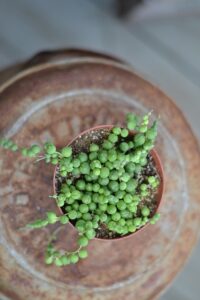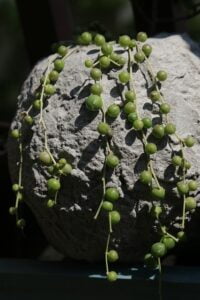Introduction
Beautiful perennial blooms called bubble plants, also known scientifically as Physostegia virginiana or “Obedient Plant,” give grace and appeal to any garden or indoor setting. Bubble plants, which are distinguished by their singular tubular blossoms that appear to float above the foliage, need particular care in order to flourish and realize their full potential. This guide will give you the necessary advice and methods to maintain the health and beauty of your bubble plants, regardless of your level of gardening expertise.
Getting to Know Bubble Plants:
North American natives known as bubble plants are distinguished by their tall, erect stems and lance-shaped, serrated leaves. Their tubular flowers are grouped in clusters along the stem and come in a variety of colors white, pink, and purple. The interesting quality that allows these unusual flowers to maintain their place when bent has given them the nickname “Obedient Plant.”

Light requirements
In places that receive both full sun and some shade, bubble plants do well. They should, ideally, get six hours or more of direct sunlight every day. To make sure they receive enough light when grown indoors, put them close to a south-facing window or supply artificial grow lights. Avoid placing bubble plants in the afternoon sunlight since it could burn the foliage.
Soil requirements
Bubble plants prefer soil that is both moist and well-draining. They may survive in a variety of soil types, including loam, sand, and clay. To increase drainage, organic matter, such as compost or peat moss, must be added to heavy clay soil. For optimum growth, keep the soil pH between 6.0 and 7.0 in the range of slightly acidic to neutral.
Watering
For bubble plants, regular, appropriate irrigation is essential. Make sure the soil is consistently moist but not soggy. When the top inch of soil seems dry to the touch, water thoroughly. You might need to water more often during the hot summer months to keep the soil from drying out. However, be careful not to overwater, as this might cause root rot.

Mulching
A layer of organic mulch applied around bubble plants aids in soil temperature control, weed control, and moisture retention. Around the base of the plants, apply two to three-inch layers of mulch, such as compost or finely chopped bark. To avoid moisture-related problems, keep mulch away from the stems.
Fertilization
Feed your bubble plants with a balanced, slow-release fertilizer in the early spring to encourage wholesome development and lots of flowers. A fertilizer with an NPK ratio of approximately 10-10-10 or 14-14-14 is the best option. Follow the dosage and application guidelines provided by the manufacturer. To prevent excessive foliage development at the price of flower production, avoid over-fertilizing your plants.
Deadheading and Pruning
Regular trimming helps bubble plants keep their shape and encourage bushier growth. Trim back the stems to a height of about six inches above the ground in the early spring before new growth appears. This will promote the growth of robust, strong stems. Additionally, clip wasted flowers back to a healthy bud or stem junction before removing them. Deadheading fosters the growth of fresh flowers while also enhancing the aesthetic of the plant.
Staking and Support
Bubble plants frequently need support because of their tall, upright growth pattern to keep them from flopping or bending beneath the weight of their blossoms. Early in the growing season, surround the plants with stakes or supports to assist preserve their vertical structure.
Management of Pests and Diseases
Bubble plants are typically resistant to pests and diseases. They might, however, occasionally deal with them.
Pests:
Although pests don’t bother bubble plants too much, they occasionally deal with insect problems. Watch out for common pests including Japanese beetles, spider mites, and aphids. Take immediate action if you spot any indications of an infestation, such as warped leaves, sticky buildup (honeydew), or visible insects. Use insecticidal soap according to the manufacturer’s directions or spray afflicted plant parts with a mix of water and light liquid soap to treat minor infestations. Consider utilizing organic insecticides created especially for the bugs in question for more severe infestations. To prevent harm to the plant or the environment, always carefully read and adhere to the directions.
Read About: How to grow dragon fruit?
Diseases:
In general, disease resistance in bubble plants is high. They could, however, occasionally experience problems like powdery mildew, leaf spot, or root rot. By giving the plants enough space, you can ensure good air circulation and ward against these illnesses. Avoid overhead irrigation since it can encourage the growth of fungi infections. To stop the disease from spreading, remove and destroy the infected plant parts as soon as you see any symptoms. Applying a fungicide that is specifically designated for the disease in question can help control the issue, but it’s important to properly follow the directions.
Winter Care
Hardy perennials that can withstand cold conditions include bubble plants. But giving them some winter care will ensure their optimum development and longevity. Cut back the stems to a couple of inches above the ground in late October, after the first frost. This will aid in winter protection for the plant and promote healthy spring regeneration. Mulch should be spread all the way around the plant’s base to act as insulation and stop soil heave. Consider covering the plants with burlap or using protective plant coverings to protect them from freezing temperatures and high winds in regions with particularly harsh winters.
Propagation
Propagation is an easy and enjoyable method for growing your collection of bubble plants or giving them to others. The two most popular techniques for proliferation are stem cuttings and division.
Division
Use a sharp, sterilized knife or garden spade to carefully separate the mature bubble plant into smaller clumps in the early spring or early fall. A piece of the root system and numerous healthy stems should be present in each division. Replant the divisions in the soil you’ve prepared, making sure they get enough water and light.
Stem Cuttings
Pick healthy, non-flowering stems in the early summer and cut them into four to six-inch long cuttings. Plant the cutting in a well-draining potting mix or a combination of perlite and vermiculite after removing the bottom leaves and dipping the cut end in the rooting hormone. Maintain regular moisture in the cuttings and expose them to bright, indirect light. The cuttings should start to grow roots after a few weeks. Transplant them into individual pots or right into the garden once they have established themselves.

Conclusion:
In order to properly care for bubble plants, you must give them enough sunlight, soil that drains well, consistent watering, and the right fertilizer. They must be pruned, deadheaded, and supported to keep their appealing appearance and avoid flopping. The plants will also remain healthy if you keep an eye out for pests and illnesses and act quickly when necessary. You may enjoy the beauty of bubble plants in your garden or indoor environment for years to come by following these tips and implementing proper winter care.

[…] How to Care Bubble Plant – A Complete Growing Guide […]